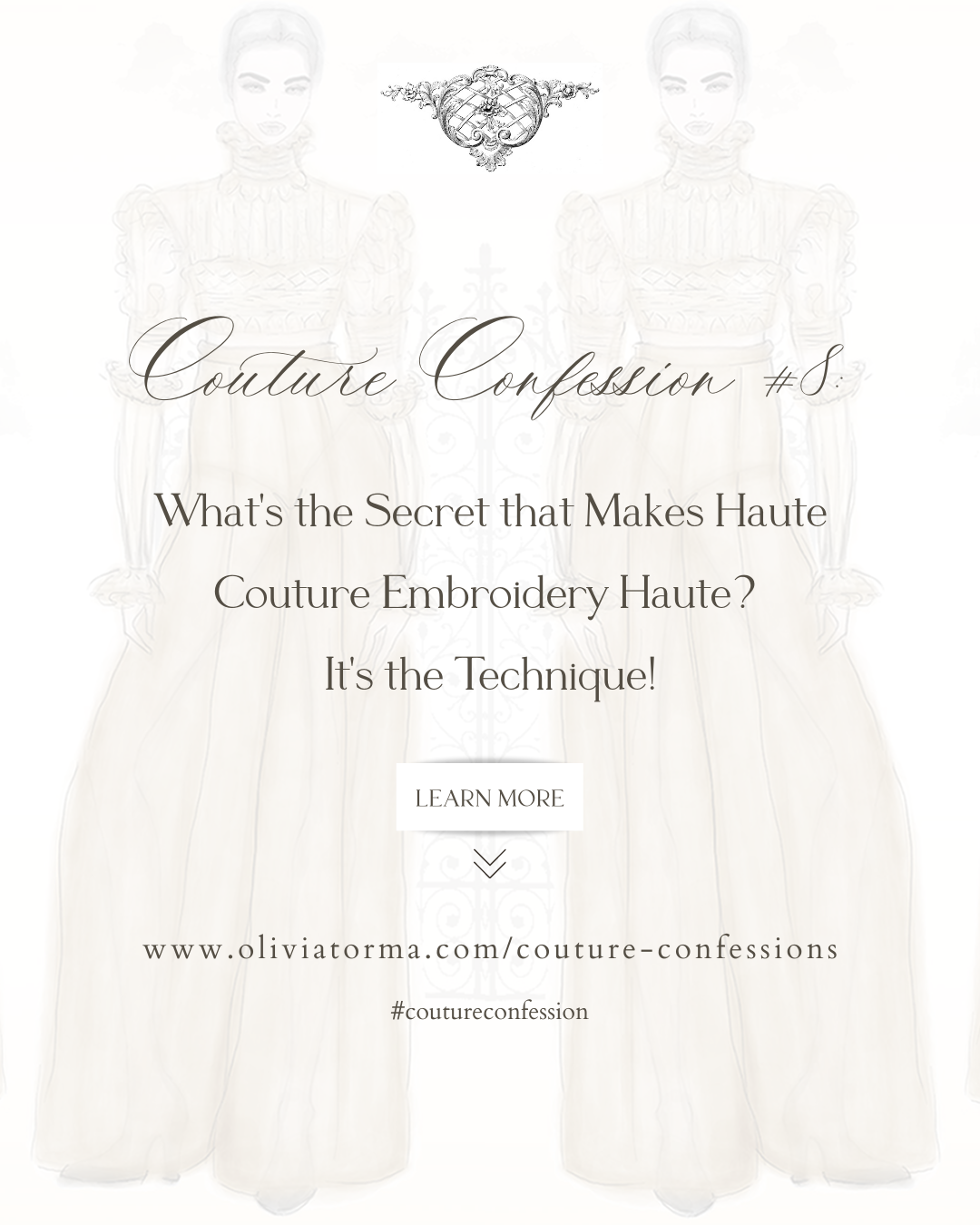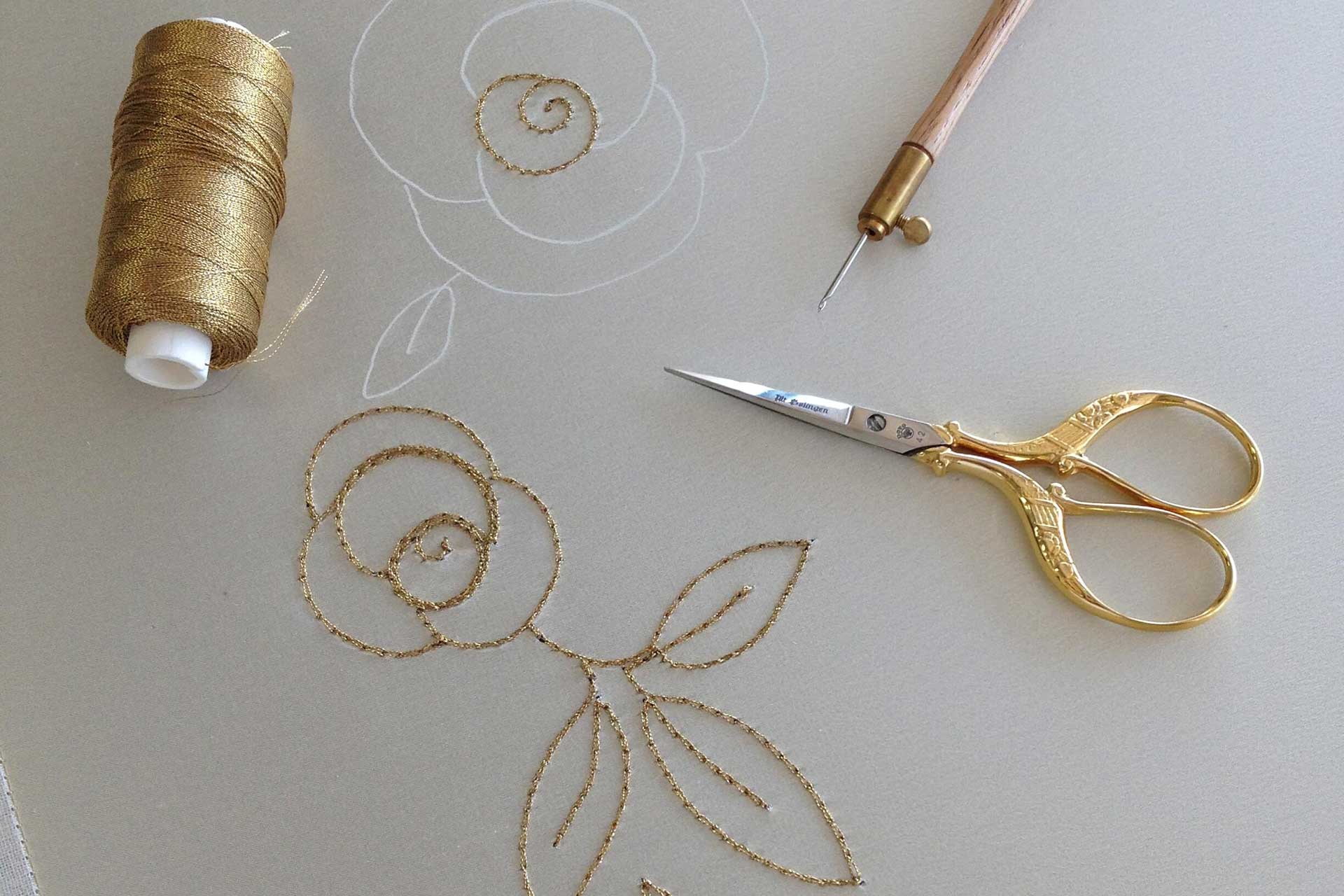What is the Secret of Haute Couture Embroidery?

Couture Confession #8: What is the Secret of Haute Couture Embroidery?
What is the secret of haute couture embroidery? It is something that is highly prized and safeguarded by the artisans who create the most beautiful fabrics anyone could wear. This practice is the soul of luxury couture and the attention to detail and time it takes to accomplish as a skill and execute in the atelier is the reason why it is only afforded by a few. The art form of haute couture embroidery and the precise hand stitching and patience it requires is in my view the secret of haute couture embroidery. They are the hallmarks that distinguish a skilled embroiderer specialising in haute couture. Even in it’s most simplest form haute couture embroidery can add a touch of minimalist luxury to the most basic garment. This might be in the form of floral motifs on a blouse or a simple row of pearl beads stitched onto a neckline, cuff or collar.
In it’s most exquisite form, haute couture embroidery is a dense embellishment of mixed media created in layers from the foundation layer to the three dimensional embellished surface using a mix of textile crafts such as ribbon work and appliqués.
But what sets haute couture embroidery apart from other forms of couture embroidery is the technique used to create the chain stitch that secures the beautiful beads and sequins and other materials to create the embellished surface. In haute couture the technique is known as Crochet de Luneville.

Crochet de Luneville was invented in the 19th century by Louis Ferry, a haute couture workroom manager in Luneville, France. Ferry invented a way to use chain stitch embroidery to attach beads and sequins to fabric. His invention sped up the process of attaching these embellishments to fabric and is regarded as a superior technique to the Indian Ari technique which also uses chain stitch embroidery to attach beads and sequins to fabric but in a different way.
In Indian Ari embroidery beads and sequins are chain stitched to the top of the fabric with the beads and sequins held on the needle. In Crochet de Luneville beads and sequins are strung onto the working thread and chain stitched to the fabric from underneath the embroidery frame. This technique results in the beads and sequins remaining on the strand should the chain stitch become loose and unravel. With the Ari technique, the beads and sequins can easily fall away and separate from the thread as they are not secured in the same manner as Crochet de Luneville.
Understanding this difference and the difference in appearance between the two techniques can help couture consumers, investors and valuers determine the authenticity and true value of an embroidered haute couture garment.
Below are images of embroidery using Crochet de Luneville and Ari embroidery. The difference between the two techniques is noticed in how the stitches appear over the sequins when they’re placed next to eachother.
Which technique do you prefer?
Crochet de Luneville Embroidered Paillettes on Italian Tulle

Ari Embroidered Cupped Sequins on Silk Organza


